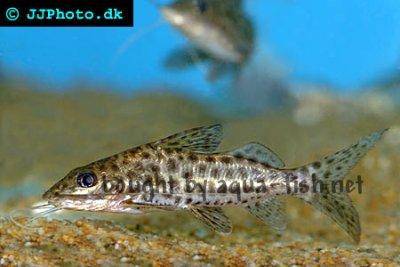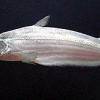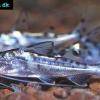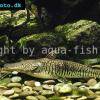Spotted pimelodus - Pimelodus maculatus
Scientific name: Pimelodus maculatus
Common name: Spotted pimelodus
Family: Pimelodidae
Usual size in fish tanks: 12 - 20 cm (4.72 - 7.87 inch)
014
Recommended pH range: 6.7 - 7.5
Recommended water hardness: 4 - 20°N (71.43 - 357.14ppm)
0°C 32°F30°C 86°F
Recommended temperature range: 21 - 25 °C (69.8 - 77°F)
The way how these fish reproduce: Spawning
Where the species comes from: South America
Temperament to its own species: peaceful
Temperament toward other fish species: aggressive to smaller
Usual place in the tank: Bottom levels
Food and Feeding
The Spotted Pimelodus (Pimelodus maculatus) is an opportunistic feeder that will accept a wide variety of foods. They particularly enjoy bloodworms, but their diet should also include high-quality pellets, sinking wafers, and live or frozen foods such as brine shrimp and earthworms. They have a tendency to overeat, often causing their bellies to swell noticeably. It is essential to regulate their feeding to prevent excessive weight gain and maintain their overall health.
Origin and Natural Habitat
Native to South America, Pimelodus maculatus is commonly found in the rivers and tributaries of Brazil and Paraguay. They prefer slow to moderate water currents and tend to inhabit areas with submerged structures and dense vegetation, where they can hide during the daytime.
Sexing
Differentiating between male and female Spotted Pimelodus is difficult, as there are no clearly visible external differences between the sexes.
Breeding
There are currently no recorded instances of Pimelodus maculatus successfully breeding in home aquariums. In the wild, they are known to reproduce through spawning, releasing eggs that are fertilized externally.
Lifespan
With proper care, Pimelodus maculatus can live up to 8 years in captivity. Maintaining stable water conditions, providing a varied diet, and ensuring they have ample space to swim and hide will contribute to their longevity.
Tank Requirements and Behavior
As a bottom-dwelling species, Spotted Pimelodus thrive in tanks with a sandy or smooth gravel substrate. They require hiding spots, such as caves, driftwood, and dense plant coverage, to feel secure. Being nocturnal, they are most active during the night and may disturb other tank mates during this time. A tank size of at least 100 liters (25 gallons) is recommended to accommodate their active nature.
Suitable Tankmates
Although peaceful toward their own species, Pimelodus maculatus can be aggressive toward smaller fish, particularly at night. Therefore, they should only be housed with larger, robust tankmates, such as:
- Severum Cichlids (Heros severus)
- Silver Dollars (Metynnis spp.)
- Firemouth Cichlids (Thorichthys meeki)
- Clown Loaches (Chromobotia macracanthus)
Suitable Plants
Although not known to be plant eaters, Spotted Pimelodus appreciate well-planted aquariums that provide shade and hiding places. Some suitable plants include:
- Amazon Sword (Echinodorus amazonicus)
- Anubias (Anubias spp.)
- Java Fern (Microsorum pteropus)
- Hornwort (Ceratophyllum demersum)
- Cryptocoryne (Cryptocoryne spp.)
Short Description
The Spotted Pimelodus (Pimelodus maculatus) is a nocturnal bottom-dwelling catfish known for its adaptability and unique spotted pattern. Due to their predatory nature, they should be kept with larger fish that they cannot consume. Providing adequate hiding places, a well-balanced diet, and a spacious tank will ensure their well-being. Regular monitoring of water quality is crucial, as they can be sensitive to fluctuations.
Pictures
Bought by aqua-fish.net from jjphoto.dk.



 Jello
Jello  Highwaterman
Highwaterman  Ornate
Ornate  Pictus
Pictus  Tiger
Tiger